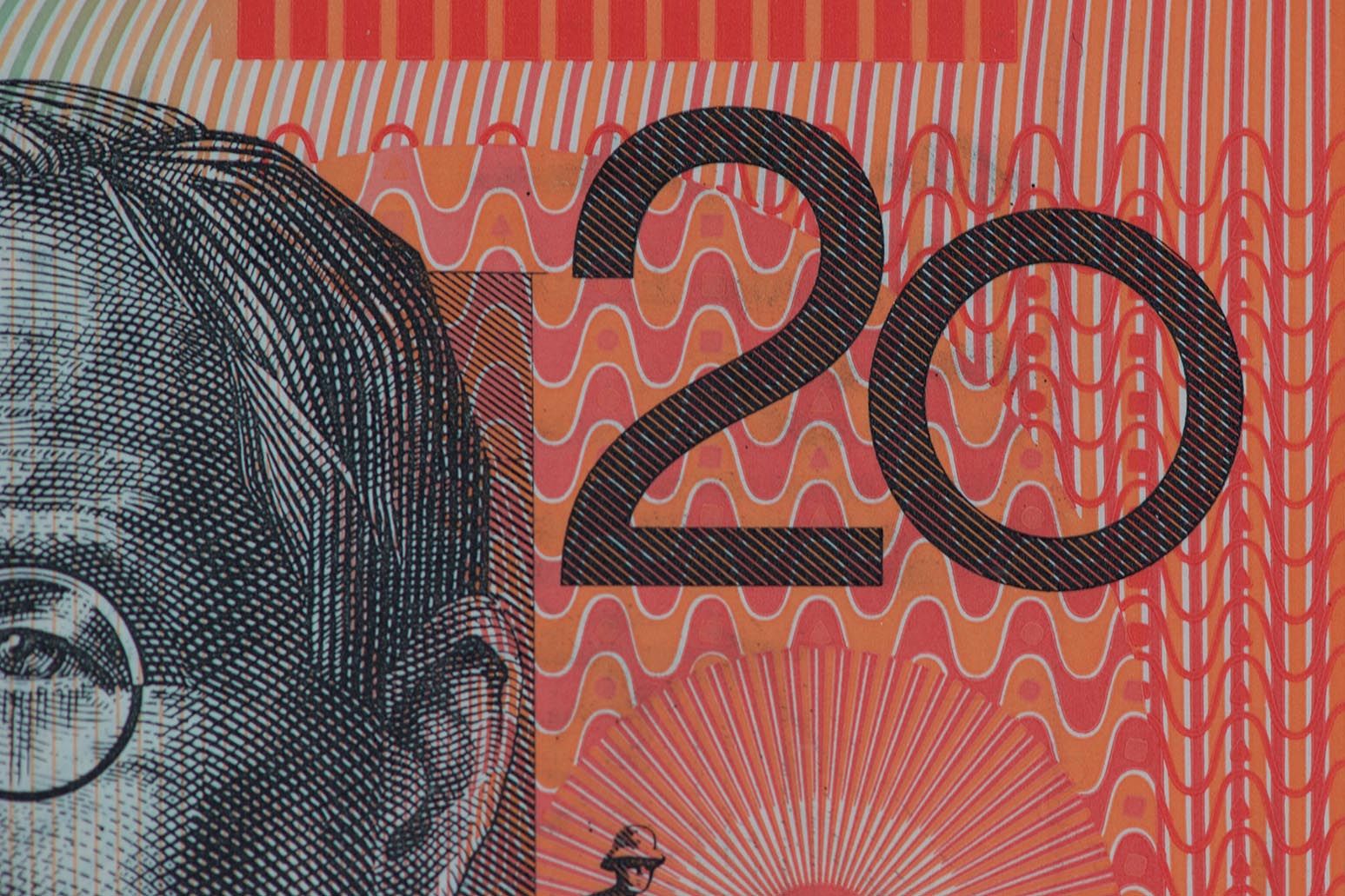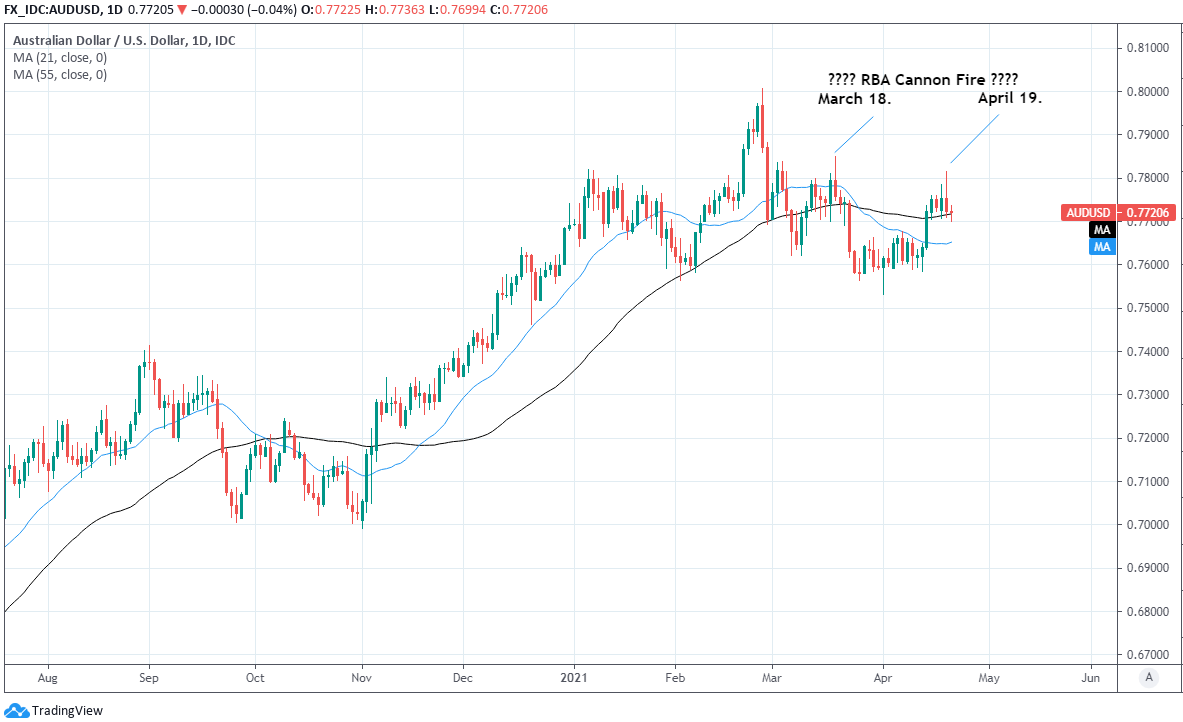Australian Dollar Bulls Risk RBA's Rifle Fire
- Written by: James Skinner
-
- AUD outperforms amid USD rebound, on AUD/USD resilience.
- After earlier losses followed a spate of buy recommendations.
- But AUD bulls risking flak from RBA’s interventionist cannons.

Image © Adobe Images
- GBP/AUD rate at publication: 1.8014
- Bank transfer rates (indicative guide): 1.7370-1.7498
- Money transfer specialist rates (indicative): 1.7550-1.7876
- More information on securing specialist rates, here
- Set up an exchange rate alert, here
The Australian Dollar remains a market favourite and has drawn further buy recommendations from analysts this week, although bullish participants risk coming under fire from the Reserve Bank of Australia which appears to have supported GBP/AUD when it recently intervened in the FX market.
Australia’s Dollar was an outperformer of major currencies on Wednesday when it showed resilience against the U.S. Dollar while many others gave up even further ground to the greenback, though this may reflect more than anything the scale of losses seen previously.
The Australian Dollar had risen strongly at the opening of the new week and had just taken a look above the 0.78 handle against the U.S. Dollar when it was overpowered by fierce selling that drove AUD/USD lower from 0.7815 to 0.7700 within a matter of hours.
“We have been arguing for an extension of the break and a move through 0.7760/85 level through the last few days so are not surprised by the push above 0.78, though we are very surprised by the size and speed of correction,” says Richard Franulovich, head of FX strategy at Westpac.
Franulovich and the Westpac team have a bullish outlook for the Australian Dollar, which is one part motivated by a brightening domestic economic picture and the other by investors’ upbeat views on the global economy with all that this likely means for commodity prices and the like.
Above: AUD/USD shown at daily intervals, sitting atop the 55-day average.
They’ve been advocating a ‘buy on dips’ strategy and aren’t alone either as in recent weeks 'buy' recommendations have been coming thick and fast, especially through April, which has brought an end to the Euro-Dollar correction and birthed a decisive reversal higher by the single currency.
That’s almost always a bearish signal for the U.S. Dollar and a bullish influence for commodity currencies, partly as a result of the Euro’s large 57% weighting in the ICE Dollar Index, and so may help to explain recent enthusiasm for the Australian Dollar.
“I now think that a break of 80 cents in Aussie is a low probability thing. I could see 75 cents breaking with a lot less official and market resistance,” says Greg Anderson, global head of FX strategy at BMO Capital Markets, in a recent podcast posted to the bank’s website.
In discussion with colleague Stephen Gallo, Anderson cited reserve asset disclosures recently published by the Reserve Bank of Australia (RBA) for a strong suspicion that "it intervened against Aussie strength in March."
Disclosures posted to the RBA’s website show its overall FX reserves rose by A$43.04BN in February to A$49.67BN in March, reflecting a large balance sheet build-up of reserves of the kind that would neatly explain the “fierce selling” which overpowered AUD/USD as it scaled 0.78 this week.
Above: RBA reserve assets of varying kinds. The lower two rows of the left hand column reveal a substantial build-up of FX reserves in March.
There is only one way in which FX reserves could grow that significantly and in such a short space of time and this would be through RBA sales of newly created Australian Dollars (newly issued bank reserves) in exchange for other currencies.
"The RBA’s reserves data suggest it intervened against Aussie strength in March. That is something Canada could do without the U.S. throwing a fit," Anderson says.
While FX reserves can be recycled into other currencies, the process of intervening in the market through an overall increase in reserves would always begin with purchases of U.S. Dollars that are felt first and foremost by the AUD/USD exchange rate.
This is why the RBA’s FX intervention, indirectly and even if unintentionally, has almost certainly helped support the Pound-to-Australian Dollar rate during March and April.
GBP/AUD always closely reflects the net performance of AUD/USD and GBP/USD but has held stubbornly above 1.78 through much of the recent six weeks even as Sterling corrected lower against the U.S. Dollar.
A steady or even rising Pound-to-Australian Dollar rate is perhaps highly unlikely to be a concern for the Bank of England (BoE) as the Monetary Policy Committee in London has not had the same degree of difficulty meeting its inflation target in recent years.
Above: GBP/AUD at daily intervals. Sits atop cluster of moving-averages but below a major Fibonacci retracement level.
Currency exchange rates do matter to the inflation targeting performances of central banks, given that stronger exchange rates reduce the cost of imported goods for companies and households, thus and at the very least restraining increases in consumer prices.
“We expect the cash rate to remain on hold at 0.1% over the next two years as our forecasts for inflation and wages growth do not clear the hurdle the RBA has set,” says Belinda Allen, an economist at Commonwealth Bank of Australia, whose colleagues are buyers of the Aussie.
Many central banks have struggled in the developed world during recent years to generate sufficient price increases across their economies.
The RBA is obliged to cultivate and foster “an inflation rate of 2–3 per cent, on average, over time,” though Australia’s consumer price index inflation rate has been below 2% for much of the time since 2014, despite sustained efforts by the RBA to lift it above the threshold.
Accordingly, and even before the coronavirus came along, the RBA had been cutting its benchmark cash rate for years and was often observed or heard seeking to discourage investors from lifting the Aussie Dollar too far, or simply too fast.
The bank gave an optimistic assessment of Australian economic prospects following its April monetary policy meeting but expressed what is now almost a customary scepticism about the odds of it attaining the elusive 2% inflation target within the necessary two-to-three year time horizon.
RBA policymakers say the economy likely needs to generate wage growth of three percent on average for all Australians to deliver the target, although right the way across the developed world political decision makers have failed to create the conditions for this over a lengthy and ongoing period.
{wbamp-hide start} {wbamp-hide end}{wbamp-show start}{wbamp-show end}


